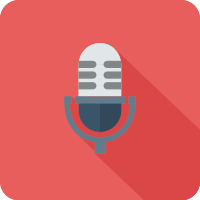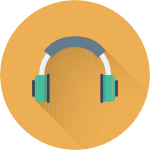
Ever tried writing a song? Then you probably know it can feel a bit overwhelming. Where do you start? How do you know what chords to use? How do you write compelling lyrics? Yeah, as most songwriters know it’s easy to feel lost in the sea of possibilities.
In this guide I'll show you how to get unstuck and write a song today!
I’ll provide a step-by-step plan that shows you exactly how to write your first (second or third) song. Among a ton of other things, you'll learn about the most common song structure, how to write a chord progression you like and how you can make sure your chords sound good together. You'll learn how to write lyrics that are evocative, exciting and perhaps even a little poetic, and how to write melodies that sound musical and natural to go along with them.

Disclaimer: This article is meant to make it easy to write a song for anyone who can play a couple of guitar chords. I give a bunch of 'rules' or guidelines along the way, such as how long a section should be or when you should change chords. These 'rules' keep things simple and will help you write something that sounds good. But of course, my way isn't the only way. Feel free to veer away from the plan anywhere you like. There is only one rule when writing music. If it sounds good, it is good.
Lastly: because you don’t need to know music theory to write a song, this guide is almost completely theory free. You only need to be able to play a couple of chords. If you find during the writing process that you don’t know enough chords, check out Guitar Chord Bootcamp: Open Chords.
Our Songwriting Roadmap
For our song, we'll need three main ingredients: harmony, melody and lyrics. Harmony refers to the chords we play, melody to the notes we sing and lyrics to the words we use. Once you have these three, you have enough to get on stage with your guitar and perform the song. Of course there are other things you might use to spice up your song: extra melodies, snappy baselines or drum grooves. However, this guide is focussed on getting the ‘backbone’ of your song down, so you can dress it up later.
So where should you start? The harmony, melody or lyrics? This guide outlines a process that has worked well for me and that will help you if you’re new or struggling with writing songs. Most songwriters find it easiest to start with the harmonies, so that’s what we’ll do here. Next, you’ll write the lyrics, which you’ll then put to melody. Of course, every songwriter has their own method, so if you feel like another order would work better for you, feel free to switch things up. Whatever works for you.
Last thing before we get going: most songs have a specific structure:
I like to write the chorus and verse first and do the bridge last, for reasons we’ll see later.
Alright, let’s write a song!
CHAPTER 1
Writing Chord Progressions

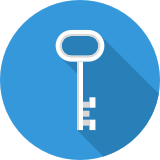
Step 1: Pick a Key
When you take a closer look at the melodies and chords in a song, you’ll notice something striking. Some notes are used over and over again, while other notes aren’t used at all. The collection of notes a song uses is what we call the ‘key’.
Keys have names such as ‘A major’ or ‘F minor’. The first part of the name, the letter, refers to the 'tonic'. The tonic is the most important note in a key. We’ll examine why this is in more detail in step 2, but in short: all the other notes in the song ‘revolve’ around the tonic. The tonic is the home base of a song and using this note gives a feeling of rest and coming home. The second part of the name of the key is most often ‘major’ or ‘minor’ and tells us what the character or mood of a key is. Major tends to sound happy, while minor has more of a dark or dramatic feel to it. (Side note: if you want to learn more about what a key is, check out Music Theory from Scratch.)
Picking a key first is helpful, because the key tells us what notes and chords will definitely sound good together.
Below there are a few common keys. Select one to see what chords are in that key and then pick one where you know most of the chords. The nice thing about these keys is that you can play the chords as ‘open guitar chords’ (so no need for barre chords if you haven’t mastered them yet). Again, you don’t have to know all the chords in the key so just pick one where you know most of them.
Pick a key

Step 2: Pick your Chords
Take out your guitar for this step.
Finding the right chords is a lot of trial and error. Pick a couple that you like, play them a couple of times, and change what you don’t like. This can be switching out one chord for a new one, or swapping places between two chords in your progression. You can also play around with how long each chord lasts.
Look for a short progression that you can loop for a couple of times. A good starting point is to try to find a three chord progression.
One very important chord is the tonic chord. This is the chord that the key you’re using is named after. So if you’re writing in C major, the tonic will be the C major chord. This chord makes you feel like you’ve arrived at home, and provides a pleasant starting point or ending. So it’s a good idea to use it in your progression.
Most commonly, the tonic is found on the first or last chord of a progression. But you can experiment with different places. It comes down to where you want to have this feeling of coming home and release of tension.
A quick example
Let’s take a look at what this process might look like. Say I want to write a song in the key of F major. After trying a few chords I come up with this progression:
Now this I like!
Now it’s your turn
Grab a piece of paper and write down four spots. Take your tonic chord and fill it in in the first spot. Fill in chords on the second and third spot and see what it sounds like. Change what you don’t like. Rinse and repeat.
If you get stuck, here are some things you could try to get unstuck:
- Try putting your tonic in the last place instead of the first.
- Change up the tempo. Slowing down a chord progression that you’ve been playing fast drastically changes the way it sounds. The reverse is also true of course.
- Change your strumming or picking pattern.
- If you find one chord you really like, but can’t find one to go with it, try changing the one you DO like. Staying focused on a certain sound or chord you like for too long will block your creative flow. But tunnel vision often prevents you from seeing that. By killing your darlings, you might stumble upon something you like even better. You can always use that specific chord or sound in your next song.
If you have something that sounds ok, but not as good as you might want, don’t worry about it and just move on to the next step. You don’t have to love it, you just have to tolerate it. All you need is something that works. Later when we add a melody, you’ll find it makes the chord progression sound better.

Step 3: Record and write down your chord progression
Once you’ve found a progression you like (enough), you’ve done most of the work as far as harmonies are concerned. Congrats! Record the chord progression on your phone and write it down somewhere.

Step 4: Rinse and repeat
There are tons of songs that only use one chord progression. In those songs, the chorus, verse and bridge all use the same progression. For practice purposes however, we’ll be writing a second progression so we can alternate between the two for the verse and the chorus.
Maybe you already know whether your progression sounds more like a verse or a chorus. If not, you might postpone that decision until you’ve written a second progression. If you’re not sure, use your first progression for your verse and the one you’re about to write as your chorus.
Songs often reuse chords of the verse in the chorus. Try to find two of your three chords, and put them in different spots in the progression. Then try some chords from your key that you haven’t used yet to fill in the spot left open.
Play around and see what works. If you get stuck, try putting the tonic in the last spot instead of the first or look at the tips at the end of step two.
I usually like to finish the melodies and lyrics for my choruses and verses before I start working on my bridge. We’ll take a look at those elements before we write our bridge.
CHAPTER 2
Writing Lyrics
When you read song lyrics, as opposed to hearing them in a song, you might notice a few things. Most song lyrics are not a story. They’re not a chronological account of how things happened from start to finish. This means that quite often you can move sentences around within a chorus without changing much of the meaning.

Instead of a story, song lyrics are usually more of a collage of sentences that together convey a certain thought, image, or idea. Very often though when we write texts, we want to start at the beginning and work towards the end. But this usually doesn’t result in great lyrics.
So let’s go through this 3-step plan and create lyrics as a collage, instead of a story.

Step 1: Collect words and sentences
Listen to your progressions. What could this song be about? Try to put into words what the general mood of the song is. Does it sound sad, hopeful, or energetic? Next, try to find a more specific subject connected to that mood. Is it hopeful because the main subject is starting a new relationship, or is it hopeful because she is looking forward to the weekend?
Now that you have a subject, we'll start collecting lines, words, phrases and metaphors that we might use in our song. The goal here is to go for collect as much material as possible. Go for quantity, not for quality. At this point, it’s pretty difficult to know the exact words you would like to use in the final version of your lyrics. So you want to collect many different moods, angles, details, viewpoints, scenes and so on. Later on you’ll mix and match everything you come up with to suit the song. Any lines you like, but are unable to fit into this song, can always be used in your next song.
Take out a few sheets of paper or open up a new word document. Start writing as many lines as you can that convey something about the subject. Don’t think too much about whether it’s any good. Just write freely and let things flow. Good lines are often short. Two or four lines that work together is also perfectly fine.
Try to cast as wide a net as possible when writing and collecting your lines. If your song is about a lost love, don’t just write about the feeling of missing that person. Also write about how empty the house feels, what the person was wearing the last time the main subject saw him or her, and how the autumn is the perfect season to feel lonely.
This last concept is called ‘show, don’t tell’ and is very helpful when writing lyrics. ‘Show, don’t tell’ means you let your audience discover what you want to tell them, instead of telling them directly. “Your face is everywhere I look” is a more evocative than “I miss you a lot.” If you find that you’re writing sentences that are important to your subject, but are more ‘tell’ than ‘show’, try to find different ways of communicating that same idea. If your original sentence is “I miss you,” try to write down some ways in which that missing someone manifests itself. Stuff like:
- “Every second, you’re on my mind.”
- “I can’t forget the smell of your hair.”
- “I still feel your lips on my shoulder.”
- “The sun on my skin doesn't feel the same.”
- “We've been talking for hours - in my mind.”

Bonus tip: Steal words and phrases
This step is optional, but can help you come up with more material. Go look at what other people have written about your subject. Search out lyrics, poems, books, tv-shows and whatever else. Write down lines, phrases, metaphors and ideas you like along with those you wrote yourself.
Feel free to use these in your song. Even if you don’t use them word-for-word, they might give you inspiration for lines of your own.
Some people carry around a notebook just to jot down phrases they come across in day-to-day life. Even if you never look into the notebook, this still might be helpful. Writing something down cements it in your brain much more than just thinking ‘I need to remember that’. Chances are, that phrase or sentence might just pop up later when you’re writing a song. You’ll be expanding your vocabulary of phrases and metaphors.

Step 2: Plan out your song
Write down “Chorus,” “Verse 1,” Verse 2,” and “Bridge.” Leave some lines open between them.
Looking over your notes, you’ll probably see some directions or subtopics that speak to you. Now you need to figure out where to use what. Pick a subtopic for each part of your song, and write it down. Here’s a rough overview of how song lyrics are often structured.
The chorus is where you talk about the main subject of the song. In a song about lost love, this could be about the feeling of missing someone. It could be about the slight pang of pain you feel when you watch people be happy in a romantic comedy ever since he or she has left you. Be as vague or specific as you want. Write what your chorus is about under “Chorus.”
The first verse is usually an introduction. In our lost love song it could be about the better times when you were still together. It could be about the weather that makes you sadder now that you’re alone. Or it could be about the sweater she has left at your house. You want to introduce the subject, without giving too much away. You want to set the scene for what’s to come.
The second verse is usually an elaboration of the subject. It might talk about the way things are now, or go into more detail about the subject. In our example it might be about how you don’t go out much anymore, or how you think you keep hearing his voice in crowded areas.
Finally, the bridge. This is where you want to contrast what you’ve said before or expand on it using a new point of view. It could be about looking ahead, or it could be approaching the subject with a fresh perspective. In our example, it could be about finally deleting the person from your phone, or it could be about how watching falling autumn leaves makes you forget for a minute. You could even reveal an unexpected plot twist. The lost love could be your dog that ran away. Or the narrator turns out to be a stalker imagining an entire, nonexistent relationship.
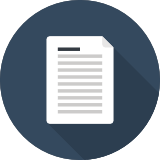
Step 3: Finish a first draft of the text
Go back to your notes and try to find lines that fit the meaning of each part. Take your lines and reconstruct them to fit a chorus or a verse. You’re looking for four lines for each section. A line can be a short sentence, but you can also take a longer sentence and divide it into two lines.
Do this step for one of your verses and your chorus. We’ll come back to the second verse in the next chapter.
CHAPTER 3
Writing Melodies

When we use instruments to write melodies, we often let our fingers do the work. We think about what strings to pick or which keys to press, and less about what it’s going to sound like. By singing instead, you force yourself to engage your musical imagination. The result is usually a melody that sounds better and more natural.
So, put on your recording or play your progression. Start singing the lyrics you wrote earlier and let yourself be surprised by what comes up. Work line by line. Try to find a melody for one line, that fits over one repetition of your chord progression.
If you feel stuck, or don’t like what you’re coming up with, there are a few things you could do:
- Try starting on a different pitch.
- If you have a few notes you like but don’t know how to continue, try making a jump up or down. Often these problems arise because you’re comfortably moving up or down in small steps, but the notes you end up on don’t work on the chord.
- If you find that your lyrics don’t quite fit, try to edit them. Most often this means shortening them.
- Try making some words really long and keep others short. “I’m so in looooooove with you,” or maybe “I’m soooooo in-love-with yoooouuuuu.”
- Try breaking up longer lines into two. This might also mean that you have to edit or scrap a later line, or have one more repetition of your chord progression.
Try to make three different melodies on the same lyrics and choose the one you like best. Melodies you like, but won’t use in this song, you can always recycle in another song.
Some people have a hard time singing. If you notice that you are unable to find the right pitch, or are unable to keep pitch, feel free to grab your instrument. Singing is also something that comes with practice. So start out your melody writing sessions with some singing and only go to your instrument when you find yourself unable to come up with something.
If you choose to use your instrument to write your melody, put on your recording of your chord progression and start noodling. Say the words of your lyrics along with the notes you play to make sure your melody fits.
Now you have one verse, go ahead and record it on your phone. For the second verse, you would usually repeat the melody of the first. Grab your collection of words and sentences. Try to find lines that could fit over your melody and match what you want to say. Don’t be afraid to rewrite lines to make them better fit your melody, or to make small edits in your melody to make it fit your lyrics.
Next up is the chorus. This is the same process as when you wrote your first verse.
Make sure you’ve recorded everything you’ve written so far.
Optional: The Bridge
Now all we need is a bridge.
Writing bridges can be quite tricky. You want it to contrast, but still be connected to the rest of the song. You could repeat all the steps above and write something completely new, but there are simpler ways to make a bridge.
- Play a solo.
- Whistle or hum the melody of your chorus, as a mock instrumental part.
- Write separate lyrics and a melody for your bridge using the chords of your verse.
- Use the chorus as the bridge, but change the way you perform it. For example: finger pick the chords instead of strumming them, or suddenly get very quiet.
And that's it!
Your song is done! Record it and write it down so you don’t forget. Perform it for family and friends and relish in the praise they give your obvious genius and endless amounts of skill.CHAPTER 4
Next Steps
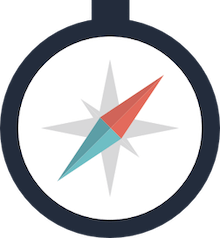
The dreaded blank page
Writers block. It's that frustrating phenomenon where you can sit at your desk all day staring at a blank page, but the muse just doesn't seem to show up.
The truth is, however, that you don’t need a muse to start writing. A lot of the time you’ll find that the ideas come much easier once you start working. Instead of staring at your desk waiting for the good ideas, start working on a ‘bad’ idea. Or give yourself an assignment, like:
- Start writing something using a chord progression from another song, intending to change the chords afterwards.
- Start by writing an extra guitar part to an existing song, and build your song from that part.
- Hit the ‘random article’ button on Wikipedia and start writing a song about the first interesting deep sea creature, Greek hero or small electronic device that catches your fancy.
- Take the last line of the chorus of your last song. Use this as the first line of the verse of your next song.
- Write a bad, cheesy, corny or unoriginal song.
It doesn’t really matter what you’re writing, as long as you are writing. You’ll probably find the ideas come very quickly once you get going.
And if you don’t, the worst case scenario is that you’ll throw out what you wrote that day and have lost some time you would otherwise spend looking at a blank page. You will, however, also have learned a ton of stuff. Every bad song you write gets you closer to a good one. So if you can’t write a good song, you might as well write a 'bad' one.
Next Steps
Now that you’ve finished your first song, start writing more. As is the case with learning to play the guitar, practice is key. You’ll notice that every song you write will be a little better than the last.
If this was indeed the first time you wrote a song, I would suggest writing a couple more using this guide. After that, start experimenting.
Try using more chords in your progressions, make longer progressions or try to incorporate chords that don’t fit into your key. Try starting with your lyrics, or with a melody. Try a more free flowing way of writing lyrics by singing your melody and forming sounds with your mouth until words appear. Try to find the process that works best for you.
You might find that after a couple of songs, you need some fresh ideas. A great way to spark creativity is to give yourself little assignments. Usually then the ideas will come automatically. Limitations breed creativity. By giving yourself an assignment, you’re limiting the options available to you. Having fewer options, means that you’re less likely to be bogged down in indecision. Plus, you might force yourself out of your comfort zone, and find yourself writing music you otherwise wouldn’t have even considered writing.
Some possible assignments are:
- If you’ve written in major before, try writing a song in a minor key.
- Try to write a song that’s much faster or slower than your last one.
- Try to think of a subject first and then try to find a chord progression that goes with it.
- Try to write a song using an instrument you’re not comfortable with, like a piano instead of a guitar.
In the end though, the biggest part of learning songwriting is to just do it a lot. Songwriting is a skill you can learn, just like playing an instrument is. And just like playing an instrument, you need practice to get good at it.
I hope this guide helped you to get started and see how much fun it is to write songs! If you have used this guide to write a song, I would love to hear it. Send me an email at bart.vangemert (at) gmail.com, and I’ll make sure to reply with all the enthusiastic encouragement you deserve.



